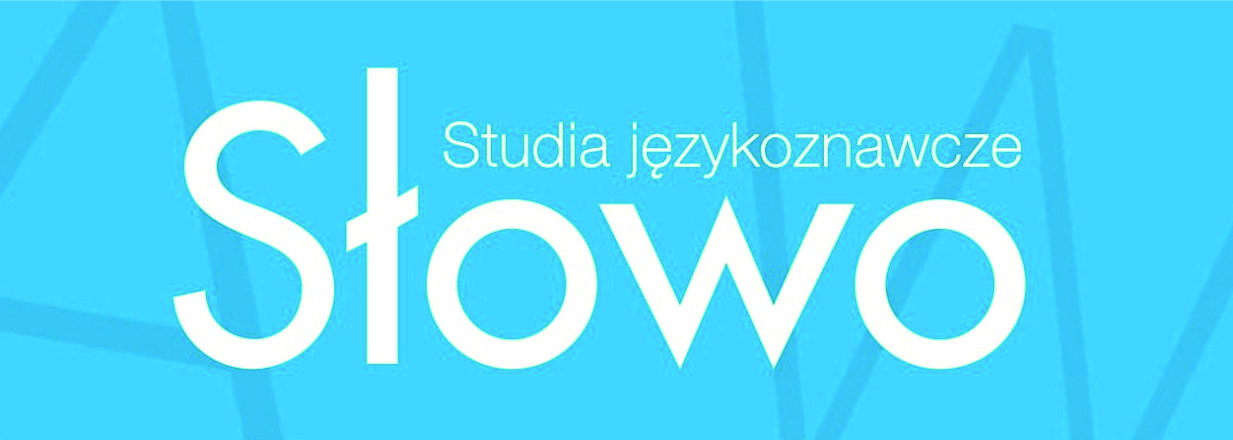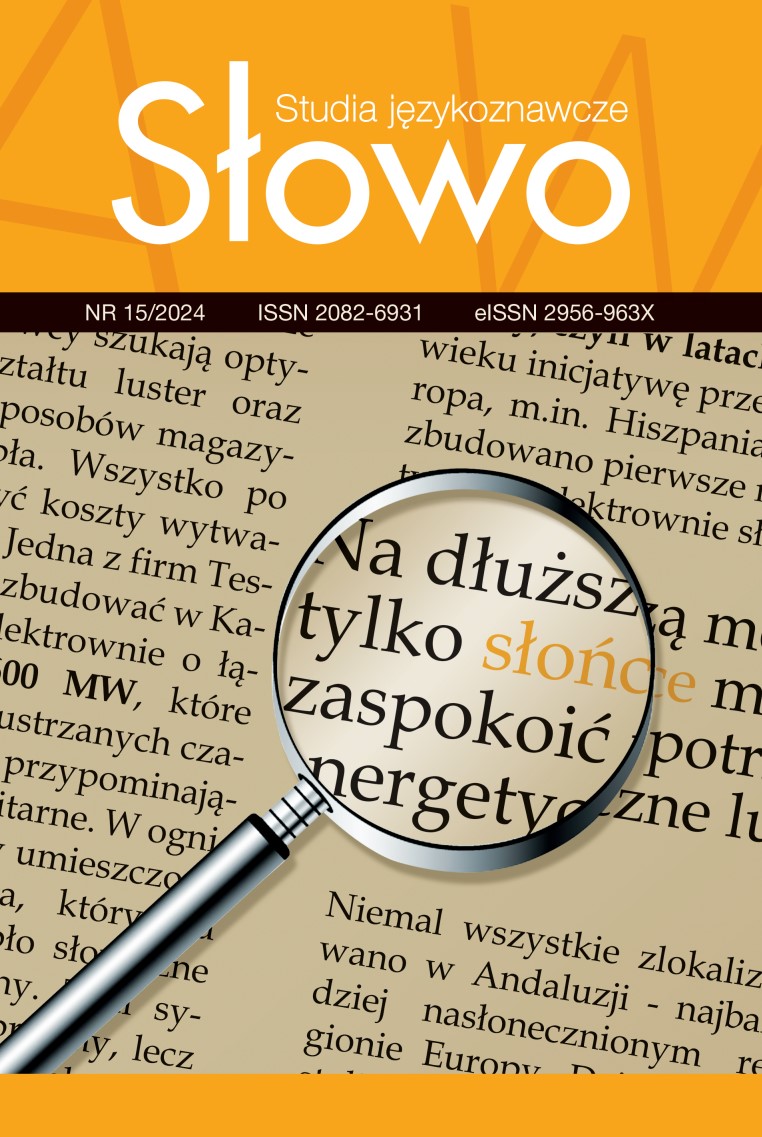Klipy YouTube wzmacniające pewność siebie jako narzędzie przydatne w kreatywnym nauczaniu słownictwa biznesu młodzieży uczącej się języka angielskiego
DOI:
https://doi.org/10.15584/slowo.2024.15.3Słowa kluczowe:
klipy YouTube, kreatywne nauczanie, ESP English, L2 coaching pewności siebieAbstrakt
Niniejsze badanie ma na celu przyczynienie się do dalszej weryfikacji pojęcia coachingu językowego, a w szczególności klipów dotyczących pewności siebie w języku. W związku z tym ma ono na celu eksplikację nowatorskiego podejścia do nauki w postaci klipów dotyczących pewności siebie w serwisie YouTube. Pomysły przedstawione w artykule opierają się na własnych doświadczeniach zdobytych w tej formie nauczania. Ponadto badania zaprezentowane w dalszej części artykułu pokazują funkcję kreatywnego podejścia do dorosłego/nastolatka uczącego się języka drugiego i wskazują na znaczenie tego podejścia w całym procesie edukacji w języku drugim.
Głównym celem niniejszego badania jest ocena przydatności klipów dotyczących pewności siebie w serwisie YouTube w nauczaniu słownictwa związanego z biznesem uczniów w wieku nastoletnim, w ten sposób określając potencjalne zalety i/lub ograniczenia wdrażania wyżej wymienionych krótkich klipów w procesie nauczania słownictwa związanego z biznesem w klasie językowej (Nation, 2001). Badania obejmują dwa etapy oceny, stosowane zarówno w grupie eksperymentalnej (E), jak i kontrolnej (C) – formę jakościową i ilościową. Ocena ilościowa jest przeprowadzana za pomocą testów wstępnych i końcowych. Oba testy skupiają się na praktycznym wykorzystaniu podstawowych elementów leksyki biznesowej, które są celem badania i są stosowane w formie klipów YouTube do grupy eksperymentalnej, bez używania takich klipów do grupy kontrolnej, gdzie te same materiały podstawowego programu nauczania są dostarczane w standardowy sposób. Ocena jakościowa jest stosowana do dwóch grup za pomocą kwestionariusza rozdawanego studentom po badaniu. Aby dostarczyć badaniom istotnych danych dotyczących opinii uczestników, wszystkich uczestników badania poproszono o odpowiedź na trzy podstawowe pytania badawcze podzielone na trzy podgrupy: /1/ mierzenie poziomu wiedzy leksykalnej uczestników; /2/ sprawdzanie poprawności odpowiedzi uczestników; i /3/ uzyskiwanie odpowiedzi celem zaprezentowania osobistego i niestrukturyzowanego poglądu uczestników (2 pytania). Pięciostopniowa skala Likerta miała na celu znalezienie materiału, który należy dalej opracować statystycznie.
Końcowe wyniki dotyczące praktycznego wykorzystania słownictwa biznesowego w grupie eksperymentalnej są statystycznie bardziej stabilne w porównaniu z wynikami uzyskanymi w grupie kontrolnej. Wyniki testu końcowego, w porównaniu z wynikami testu wstępnego, wzmacniają teorię, że nośnik docelowych elementów słownictwa, czyli klipy YouTube trenera pewności siebie, poprawiły wiedzę uczniów w grupie eksperymentalnej w porównaniu z grupą kontrolną, która uczyła się ich w tradycyjny, papierowy sposób. Stwierdzono również, że istnieje związek między klipami YouTube trenera pewności siebie a kreatywnym podejściem do nauki słownictwa, w tym słownictwa biznesowego. Co więcej, uzyskane wyniki wykazały, że /1/ większość uczniów (95%) nigdy nie posługiwała się klipami YouTube trenera pewności siebie jako formą pomagającą im w wykorzystaniu słownictwa biznesowego, co również sugeruje, że istnieje ogromna szansa na dalsze eksplorowanie i wykorzystywanie tego typu nauki w niedalekiej przyszłości; /2/ postawa uczniów wobec przydatności klipów YouTube trenera pewności siebie w nauce słownictwa związanego z biznesem w sposób bezstresowy została przez nich oceniona jako bardzo przydatna; i /3/ ogólne postrzeganie przez uczniów klipów YouTube trenera pewności siebie w nauce nowych słów i zwrotów związanych z biznesem w sposób kreatywny i przyjemny zostało również ocenione jako przeważnie pozytywne.
Badania pozwalają określić, w jakim stopniu uczniowie w wieku dojrzewania biorący udział w edukacji ESP English mogliby oczekiwać sukcesu, gdyby tylko poproszono ich o udział w lekcjach opartych na angażujących i kreatywnie opracowanych materiałach, takich jak klipy YouTube trenera pewności siebie. Wyniki badania potwierdzają istnienie związku między klipami YouTube trenera pewności siebie a kreatywnym podejściem do nauki słownictwa, po raz kolejny podkreślając znaczenie wprowadzania atrakcyjnych i kreatywnych materiałów, które mogą zostać pozytywnie ocenione przez uczących się; teza, że takie materiały sprawiają, że uczący się są bardziej skłonni do samomotywowania się i dobrowolnego oddawania się dalszemu wysiłkowi umysłowemu w oczekiwaniu na działania, została zatem ponownie pozytywnie oceniona.
Downloads
Bibliografia
Almurashi, W.A. (2016). The Effective Use of YouTube Videos for Teaching English Language in the Classrooms as Supplementary Material at Taibah University. International Journal of English Language and Linguistic Research, 4(3), 32–47.
Csikszentmihalyi, M. (1998). Finding Flow: The Psychology Of Engagement With Everyday Life. Nashville: Ingram Publishers Service US.
Dougles, D. (2010) Understanding Language Testing. London : Hodder Education.
Kabooha, R., Elyas, T. (2015). The Impacts of Using YouTube Videos on Learning Vocabulary on Saudi EFL Classroom. Retrieved from: https://library.iated.org/view/KABOUHA20151B,åP (13.07.2023).
Kavaliauskiené, G., Januleviéienö, V. (2001). Using the Lexical Approach for the Acquisition of ESP Vocabulary. The Internet TESL Journal, 7(3). Retrieved from: http://iteslj.org/Articles/Kavaliauskiene-LA.html (12.07.2023).
Lehrer, J. (2012). Imagine: How Creativity Works. Oxford: Conogate Books.
Lin, Ch., Tseng, Y. (2012). Videos and Animations for Vocabulary Learning: A Study on Difficult Words. The Turkish Online Journal of Educational Technology, 11(4), 346–355.
Machmud, K., Abdulah, R. (2017). Using Smartphone-Integrated Model of Teaching to Overcome Students’ Speaking Anxiety in Learning English as a Foreign Language. Journal of Arts & Humanities, 6(9), 1–11.
Mayer, R. (2001). Cognitive principles of multimedia learning: The role of modality and contiguity. Journal of Education Psychology, 91(2), 358–368.
Miangah, T.M., Nezarat, A. (2012). Mobile – Assisted Language Learning. International Journal of Distributed and Parallel Systems, 3(1), 309–319.
mmmEnglish (2018b). 10 Business English Expressions You Need To Know | Vocabulary [Video]. YouTube. Retrieved from: https://www.youtube.com/watch?v=PAUmGYm7IG0 (11.01.2018).
mmmEnglish (2018a). 6 NEW English IDIOMS – Business English Vocabulary [Video]. YouTube. Retrieved from: https://www.youtube.com/watch?v=I7VkT1TxT0M (25.07.2018).
Nation, I.S.P. (2001). Learning vocabulary in another language. Cambridge: Cambridge University Press.
Paling, R. (2013) Efficient Language Coaching. Retrieved from: https://efficientlanguagecoaching.com (19.09.2019).
Polok, K., Mala, E., Muglova, D. (2021). On the salience of becoming a creative foreign language teacher. X Lingua European Scientific Language Journal, 152–162.
Rachmawati, R., Cahyani, F. (2020). The Use of YouTube Videos in Improving Non-English Department Students’ Pronunciation Skills. Alsuna. Journal of Arabic and English Language, 3(2), 83–95. DOI: https://doi.org/10.3 1538/alsuna.v3i2.916 (12.07.2023).
Riswandi, D. (2016). Use of YouTube-Based Videos to Improve Students’ Speaking Skill. Proceeding The 2nd International Conference on Teacher Training and Education Sebelas Maret University, 2(1), 298–306.
Scrivener, J. (2010). Learning Teaching 3rd Edition. London: Macmillan.
Selwyn, N. (2012). Making sense of young people, education and digital technology: The role of sociological theory. Oxford Review of Education, 38(1), 81–96.
Stuart, A.E. (2013). Engaging the Audience: Developing Presentation Skills in Science Students. Journal of Undergraduate Neuroscience Education, 12(1), 4–10.
Pobrania
Opublikowane
Jak cytować
Numer
Dział
Licencja
Prawa autorskie (c) 2024 Słowo. Studia językoznawcze

Utwór dostępny jest na licencji Creative Commons Uznanie autorstwa – Użycie niekomercyjne 4.0 Międzynarodowe.


